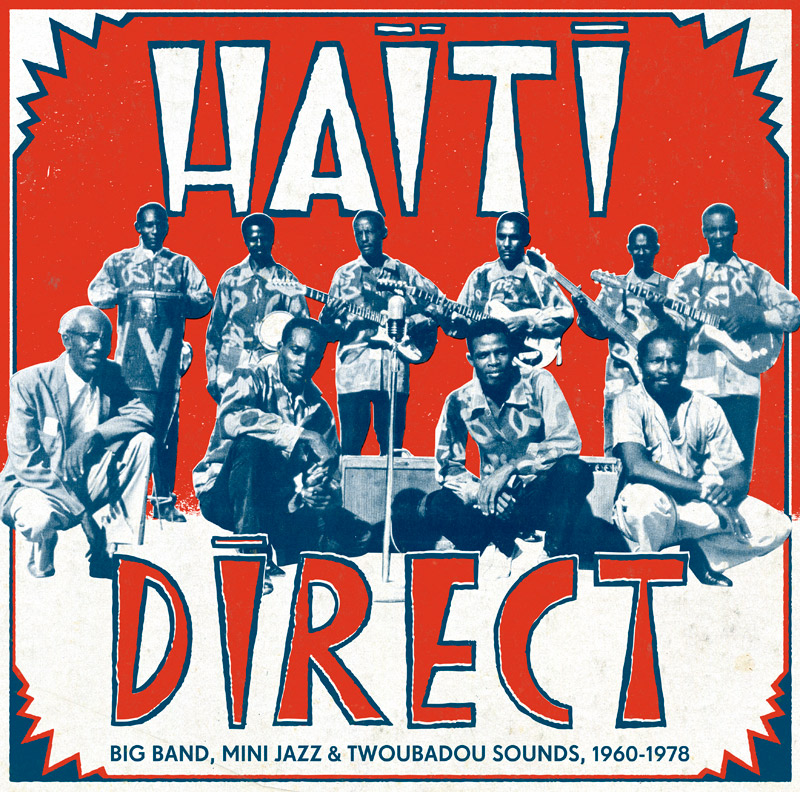Haiti has an extremely rich and complex popular music history, but much of the music and related knowledge remains in the care of avid collectors and old-timers within Haitian communities. So it is rare, refreshing and laudable that U.S.-based record label Strut and master-mixer Hugo Mendez (of Sofrito) have dug into this history to produce a compilation with the depth and historical vision of Haiti Direct: Two disks featuring 28 tracks and containing almost three hours of Haitian popular music recorded between 1960 to 1978.
The detailed liner-notes (almost a small book) reveal how Haitian popular music in the modern sense came into being and flourished during this period, despite--but also thanks--to the oppressive father and son dictatorships of “Papa Doc” and “Baby Doc” Duvalier. While the Duvaliers promoted Haitian popular music as part of their program of cultural nationalism, they also persecuted musicians who did not compose songs praising them. So, ironically, Haitian popular music became increasingly internationalized as musicians fled the dictatorship to join growing Haitian communities in NYC, Miami, Paris, Cuba, the Antilles, and even Zaire (Congo), By the 1970s, the top Haitian bands and record labels were based outside the country. Tracks like “Ti Gaçon” from Ibo Combo, who were one of the first bands to relocate to NYC, speak to the Haitian diaspora experience, not only through the lyrics, but also through the musical influences present.
During the late 1950s, a new sound arose in Port-au-Prince, called compas direct, (literally “direct beat”) a style primarily created by Nemours Jean-Batiste. His group featured two electric guitars, dynamic drums, a big horn section, and lots of percussion. Although compas became considered the quintessential Haitian popular music, it was based on a variety of influences, especially Dominican merengue, but also Cuban son and charanga, and U.S. big-band swing jazz. You can hear Nemours’ unique style on the track “Ti Carole,” which features a big-band horn section, but also an intimate accordion solo which references the Russian folk song “Dark Eyes.”
In the early 1960s, Jean-Batiste’s former bandmate and musical rival Webert Sicot introduced a style called cadence rampa which further embraced elements of Cuban son and U.S. jazz. Cuban influenced music is strongly featured on the second disk of Haiti Direct, the most extreme example being “Homenaje a los Embassadores,” a Cuban son-pregon interpreted through cadence by Les Ambassadeurs, but sung in heavily accented Spanish.
During the same time-period in the rural countryside, a style of acoustic folk music called twoubadou, ("troubadour") flourished. With simple arrangements and plenty of Dominican and Cuban musical influence, twoubadou provided an rootsy alternative to the big-band sounds of the cities. The clearest example of this style on Haiti Direct is Ti Paris, playing “Cochon St. Antoine,” but you can also hear the more traditional sounds of a rara group on the track “Gade Moune Yo,” from Ra Ra de Léogane.
Then came the raucous sounds of the mini-jazz bands, which took over from the big-band compas groups in the 1970s. “Mini” referred to both the smaller size of the bands, which were usually focused around one lead instrument, either sax or guitar, but also to the mini-skirts in fashion among the female fans of this style. Mini-jazz bands such as Les Difficiles de Pétion-Ville, Les Shleu-Shleu and Tabou Combo took a hard-hitting approach to compas, with musical and cultural influences from African-American funk and rock.
One of the stand-out tracks on this compilation comes from a lesser known group, Scorpio Universel, led by guitarist Robert Martino. “Ti Lu Lupe” is soaked in late-'70s awesomeness: Phasers on the drums, drastic, breath-taking rhythm breaks, a ripping trombone solo, a blasting horn section, shouted group vocals, tight guitars, and, best of all, a totally unexpected, demonic synth lead which comes out of nowhere half-way through the song.
There is so much amazing, energetic music on this compilation; each one of the 28 tracks has some unique musical feature which is worthy of your ears, and worthy of lengthy description. But, honestly, Hugo Mendez has already done all the necessary describing in his liner notes. So go get yours, and listen up!
To whet your appetite, here are three tracks from the comp:








